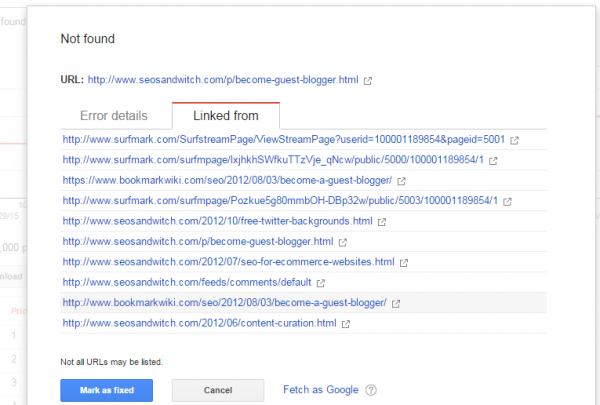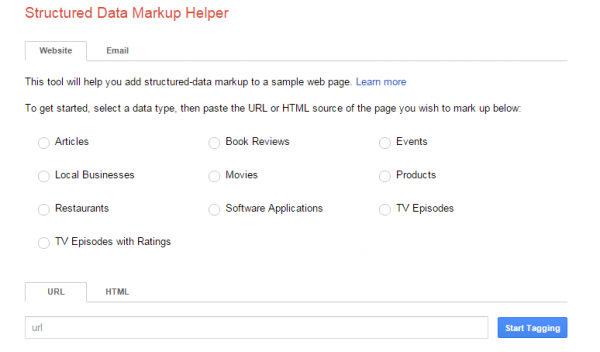How well prepared are you for a technical site audit?
Here are some here are 5 points not to miss.
1. Take Mobile Optimization To The Next Level
Mobile is critical for your business. More than half of the search queries that Google handles every day come from mobile devices. These are the simple steps to make your website a mobile super champ:
- Take the mobile friendly test.This test will analyze a URL and report if the page has a mobile-friendly design.
- Have a responsive website because in a responsive site your HTML and URL stays the same regardless of the user’s device.
- Allow Googlebot to have access to a page’s resources, such as CSS, JavaScript, or images, so that it may display and work well on a mobile browser. If you don’t allow Googlebot crawling then it may not detect that the page is “mobile-friendly,” and therefore not properly serve it to mobile searchers.
- Make use of Accelerated Mobile Pages (AMP). AMP was launched as an open source initiative that lets publishers create mobile optimized content that can instantly load everywhere.
- Use rich snippets for apps. With the help of rich snippets for mobile application, Google can better display your app details in the search results.
- Use a mobile sitemap. For more help, please visit this tutorial from Google.
2. Improve The Speed Of Your Site
Google incorporates site speed into its ranking algorithm. As the number of mobile searches has exceeded more than 50% of the existing search queries that Google handles on a daily basis, speed is going to be an important factor in 2016 and ahead. Here are a few guidelines that you should follow to have an optimized site speed:
- Run page speed insights test that will help to analyze the content of a web page and generate suggestions to make that page faster.
- Good hosting plays a vital role in the overall server speed.
- If you are an e-commerce site owner then try optimizing your database.
- Use CSS, reduce scripts, minimize the number of HTTP requests and use AMP (Accelerated Mobile Pages) for quick loading.
- Enable compression and keep your images optimized.
- Enable browser caching and reduce the number of plugins.
3. Handle 404 Pages And Duplicate Content Smartly
How You Should Handle a 404 Page?
- See where invalid links are coming from by viewing the Linked from these pages section (in GWT), which you reach by clicking the URL.
- Fix or delete links that are from your own site.
- 404’s should only be redirected to a category or parent page if that’s the most relevant user experience available.
- Create a custom 404 page for a positive user experience. Tell visitors clearly that the page they’re looking for can’t be found. Use language that is friendly and inviting.
- Make sure your 404 page uses the same look and feel (including navigation) as the rest of your site.
- Consider adding links to your most popular articles or posts, as well as a link to your site’s home page.
How You Should Handle Duplicate Content?
- Use 301 redirects (“Permanent Redirect”) in your .htaccess file to redirect users, Googlebot, and other spiders.
- Use canonical tags to clearly tell the search engines which version they should consider for ranking.
- If you create placeholder pages, use the noindex meta tag to block these pages from being indexed.
- Use Search Console to tell Googlehow you prefer your site to be indexed.
- When syndicating content, make sure the syndicating website adds a link back to the original content.
4. Site Architecture And User Friendly URLStructure
It is important to check your site on a text-based browser in order to ensure that all the links are clearly visible to the crawlers. Some of the best practices for having a user friendly URL structure are provided below:
- Usea broad to narrow navigation structure (start from the top-level hierarchy and reach to the bottom).
- Make use of breadcrumb navigation to help a user “locate” themselves on the site.
- Use wireframe prototyping that will help to block out the placement of content and navigation as seen below.
- Keep all the important links in the top navigation.
- Create asitemap (both HTML and XML) and submit the XMLsitemap to Google via Google Webmasters Tools.
- Add proper canonical tags to minimize issues from content redundancy.
- Provide relevant names to directories, sub-directories and files.
5. Optimize Your Code And Make Use Of Schema.org Markup
Schema.org is a set of metadata tomake it easier for the search engines to understand the content of the page. Adding Schema markup may improvethe way how apage displays in SERPs by enhancing the rich snippets.
Schema tells the search engines what your data means, not just what it says. For example, let’s say the wordsDavid Cameroon appear in an article. If I put the right schema markup around the name David Cameroon, I’ve just told that search engine that David Cameroon is the director of a movie, not just a couple random words.
We can add data markup for:
- Articles
- Local businesses
- Restaurants
- TV episodes and ratings
- Book Reviews
- Movies
- Software Applications
- Events
- & Products.
How to use it?
1- Visit, structured data markup helper.
2- Choose the type of markup that you wish to add.
3- Tag the relevant data. The page will load in the markup tool, and provide you with the workspace for the next phase of markup tagging items. Youll see your web page in the left pane, and the data items in the right pane. Highlight and select the type of elements to be marked up.
4- Click on create HTML.
5- Download the new HTML with added microdata and click finish.
[related cta]
- A1 Website Analyzer: SEO Audit Tool & Website Crawler
- How To Do A Complete SEO Audit
- How To Do A Link Audit For Your Own Company
* Lead image adapted from teresaphillips1965
About the Author: Joydeep Bhattacharya
5 Points Not To Overlook In A Technical SEO Audit
The post 5 Points Not To Overlook In A Technical SEO Audit appeared first on Search Engine People Blog.
(73)
Report Post














